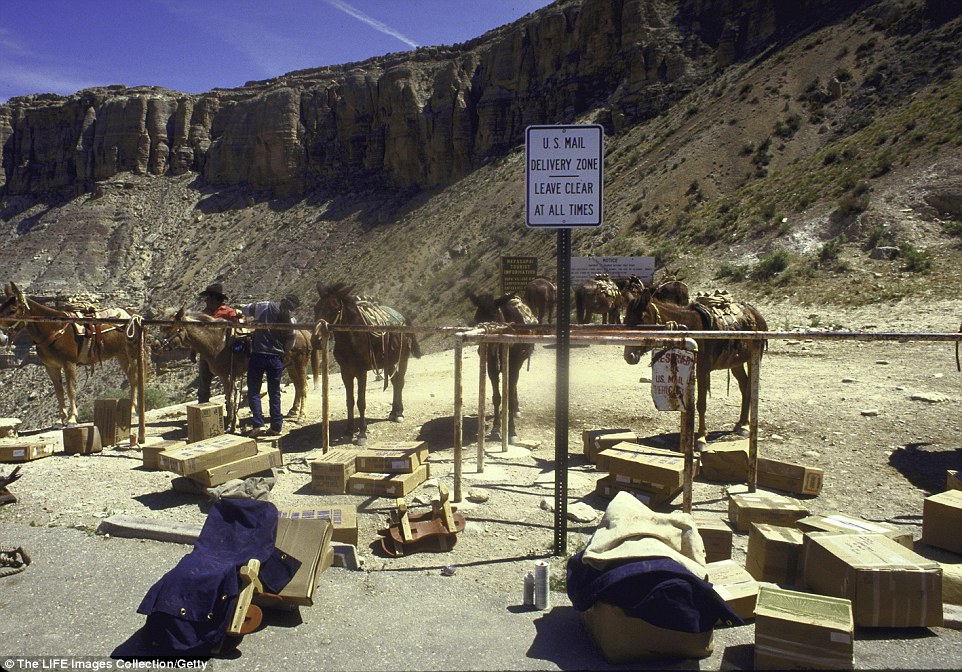Environment & Energy
Related: About this forumMercedes-Benz unveil all-electric 26 Ton heavy-duty Urban eTruck
Daimler Trucks presented the Mercedes-Benz Urban eTruck in Stuttgart today, as the first fully electric truck with an admissible total weight of up to 26 tonnes. This means that in the future, heavy trucks will take part in urban distribution operations with zero local emissions and hardly a whisper.

The market launch of this technology is conceivable for Daimler Trucks at the beginning of the next decade. In the light distribution sector, Daimler Trucks has already been impressively demonstrating the day-to-day suitability of the fully electric truck in customer trials with the Fuso Canter E-Cell since 2014. The development of electric trucks and series production maturity are fixed parts of the strategy of Daimler Trucks to build on our technological leadership. For this purpose a considerable part of the future investments by the truck division in the fields of research and development flow in the further development of the full electric drive.
"Electric drive systems previously only saw extremely limited use in trucks. Nowadays costs, performance and charging times develop further so rapidly that now there is a trend reversal in the distribution sector: the time is ripe for the electric truck. In light distribution trucks, our Fuso Canter E-Cell has already been undergoing intensive customer trials since 2014. And with the Mercedes-Benz Urban eTruck, we are now electrifying the heavy distribution segment up to 26 tonnes. We intend to establish electric driving as systematically as autonomous and connected driving," says Dr. Wolfgang Bernhard, responsible for Daimler Trucks & Buses at the Board of Management.
Growing urbanisation requires fully electric trucks
Better air quality, lower noise and restricted-access zones are now important keywords in large metropolises worldwide, because more and more people worldwide are moving to cities. 2008 was the first year in which more people lived in cities than in the countryside. The trend is continuing: The UN predicts a global population of nine billion people by 2050, with approximately 70 percent of them living in cities. In future, it will be necessary to transport goods in urban environments for increasing numbers of people – and with the lowest possible emissions and noise. By now large cities such as London or Paris are considering a ban on internal combustion engines in city centres in the future. That means: there will be fully electric trucks ensuring the supply of humas with food or other goods of daily needs.
Fast enhancement of battery capacity while significantly lower costs
Until quite recently, the use of fully electric drives systems in trucks seemed to be unimaginable – especially because of the high costs of the batteries coupled with a low range. The technology has now become much more mature. In particular battery cells rapidly developing further. Daimler Trucks expects the costs of batteries to lower by the factor 2.5 between 1997 and 2025 – from 500 Euro/kWh down to 200 Euro/kWh. At the same time, performance will improve by the same factor over the same period – from 80 Wh/kg up to 200 Wh/kg.
Stefan Buchner, Head of Mercedes-Benz Trucks...
muntrv
(14,505 posts)nationalize the fed
(2,169 posts)So to say "Tesla has a truck too" is a bit of a stretch.
Right now they have a few problems- a Model X that isn't ready for prime time and the fact that they are burning cash at the rate of about $300 million/quarter.
Next, they are apparently going to buy out the money losing company Solar City (run by Elon Musk's cousins and partly owned by Musk) so their cash problems may get worse before they ever get better. Time will tell.
happyslug
(14,779 posts)61% of oil usage in the US is in cars and light trucks, which basically means personal transportation to and from work, school and other activities. 17.5% of all oil used in Transportation is used by the heaviest trucks.
"Medium Size Trucks" use just over 4% of all oil used in transportation. This is the market Mercedes Benz is aiming its electric trucks at.
Year.....Cars.....Light... ...Light ....Motorcycles...Buses....Class....Class......Heavy.... Highway....Total
.....................Trucks.....vehicle..................................3-6......7-8........Trucks.....Subtotal....Transportation
...................................subtotal...............................Trucks...Trucks
1970..4,424......803.......,,5,227........4..............62........140.......598........738........6,031.........../.7,333
2010..4,395...,,4,193.......8,588........28.............90........557....2,375......2,933...//..11,639..........13,548
The "Classes" of trucks are basically set by the Federal Government, but technically are set by each
state. Here is a break down of each "Class":
CLASS....................Weight range............Typical Type of Vehicle in that Class:
CLASS ONE.............6,000 lbs. or less, ......1/2 ton or smaller Pickup...Mini Pickup...Minivan..SUV.,Utility Van
CLASS TWO............6,001 to 10,000 lbs....3/4 ton Pickup Full Size Pickup...Mini Bus...Minivan...Step Van
CLASS THREE........10,001 to 14,000 lbs....1 ton Pickup,....City Delivery....Mini Bus Walk In.. Hummers
CLASS FOUR.........14,001 to 16,000 lbs....."Medium Size Truck....City Delivery....Conventional Van...Plow truck
CLASS FIVE..........16,001 to 19,500 lbs......Bucket....City Delivery.....Large Walk In
CLASS SIX...........19,501 to 26,000 lbs..... Beverage Rack....School Bus.....Single Axle Van.... Stake Body
You need a CDL license for the following classes of vehicles:
CLASS SEVEN.....26,001 to 33,000 lbs.....City Transit Bus.....Furniture.....Refuse...... Heavy Tow Truck
CLASS EIGHT......33,001 lbs. & over.........Cement Mixer....Dump.....Semi Sleeper....Tour Bus....Fire Truck.. Fuel Heavy....Semi Tractor
Now, most trucks between 1/2 ton pickups and Tractor Trailers are used for local deliveries and then not daily. For example many municipality have medium trucks they use in the winter during Snow Storms and then in the summer if a tree fall across a highway to some other similar type of maintenance but that is all. They need the truck when they need it, but it is something they need on a weekly basis not a daily basis.
Many local stores are serviced by such medium trucks, but most of the goods first go by Tractor Trailer to a local hub and then from that hub to various stores. The trips are planned to hit the most stores on a trip, so such trucks mostly go one to two miles between stores. Stops at one store, then the next then the next and so on. The trip itself may be less then 20 miles a day, but takes a full eight hours for the driver also has to drop off the goods from the truck to the store. Now with a 20 mile or less range, most truck buyers would NOT want to risk running out of electrical power, but these can do 200 km or about 125 miles. Thus such electric trucks could be an option for any distributor whose daily trip is less then 100 miles a day (you want the 25 miles extra as a margin of safety).
Now, for most highway truck maintenance use the electric truck has several good points. First no need for a direct drive to each wheel. Each wheel could have its own electric motor and all you need is power from any central electric power source. You can power the vehicle up in the garage where it is kept, not need to take the truck to a Fuel Station or to have someone bring fuel to the garage or the truck itself. The most routine maintenance on any oil based vehicle is changing the oil, no need to do so on electric drive (and one less thing to go wrong). Electric engines have very long life spans, all other factors the same about three times an gasoline or diesel engine. If the electric drive goes bad, just replace the engine on whatever wheel it is on.
The down side is range and the need to keep trucks on the road for days on end during major snow storms (same truck different drivers, but the truck plowing streets 24 hours a day). Today recharging such trucks in such circumstances is almost impossible thus a lot of highway maintenance trucks will stay oil based for decades.
For Delivery trucks the need for 24 hours use does not really exists, thus a good market for electric trucks. If customer would agree to install rapid recharge units at their docks, travel more then 100 miles are possible (but the problem is most stores with docks tend to get their supplies from tractor trailers in those docks NOT medium trucks).
This appears to be a good niche market for people to get into. The real test is getting businesses to try out these electric trucks. The up front costs will be higher then buying a convention medium truck (Both the truck will be more expensive AND you have the expense of setting up en electric charging system for each truck) but both should go down (with the cost of truck declining as more are sold AND once someone has enough electric trucks, the new trucks can often use the electric recharger set up for older trucks).
The US Postal Office is experimenting with electric trucks (and has been doing so since the 1970s) but at present such vehicles represent less the 1% of the vehicles of the USPS:
https://about.usps.com/who-we-are/postal-history/electric-vehicles.pdf
The Postal Service has also tested electric light-duty vehicles for city delivery, hoping to add to its fleet of cost-effective,
environmentally friendly alternatives to gasoline-powered vehicles.
In 2002, the Postal Service began testing the two-wheeled Segway for mail delivery, but ended its evaluation after a few
years. The Segway could not go the distance on one charge, did not have adequate storage capacity, and its lack of
suspension made for rough rides.
In October 2008, letter carriers began testing three-wheeled T3s in Florida, California, and Arizona. The T3s were
equipped with a small trailer that added to its storage capacity and had a reported 40-mile range per charge. Thirteen of the
test vehicles were still in use in 2014, but no further vehicles were purchased due to the vehicles' vulnerability to weather
and 5 mph maximum speed limit.
Beginning in 2011, three Neighborhood Electric Vehicles (NEVs) were tested for mail delivery in Alexandria, Virginia –
one from e-Ride Industries and two from Vantage Vehicle International, Inc. The vehicles were limited to roads with
speed limits at or below 25 MPH, limiting their usefulness for mail delivery. The tests ended in 2012.
Although electric vehicles represented only a small fraction of the Postal Service’s delivery fleet in 2013, together with other
types of alternative-fuel vehicles they numbered more than 42,500, comprising about 20 percent of the fleet and
representing the largest civilian fleet of alternative fuel capable vehicles in the world. See Note 14
Note 14: In 2013, 42,568 of 208,807 vehicles in the Postal Service's fleet were alternatively-fueled (data as reported to FAST, the Federal Automotive Statistical Tool, at https://fastweb.inel.gov/index.htm, as of January 8, 2014). Of the total number of
alternative-fuel vehicles, 40,979 consisted of flexible-fuel E85 models, capable of running on either gasoline or ethanol-based
fuel.
https://about.usps.com/who-we-are/postal-history/electric-vehicles.pdf
The USPS is looking to replace its trucks and electric trucks are one possibly:
As Burns notes, the stop-and-go nature of the USPS trucks accounts for their extremely poor gas mileage (about nine miles per gallon), high maintenance costs and overly toxic tailpipe emissions. The key opportunity for electrification in this class of vehicles is that unlike passenger vehicles, these local delivery trucks typically travel a predictable number of miles per day and then come back to a central location.
http://www.dgiwire.com/usps-must-buy-drone-ready-electric-trucks/
In urban areas Electric trucks would be ideal, that includes the suburbs. In rural areas I see the Post Office staying with oil base trucks (the Postal Service also still uses mules).
https://about.usps.com/who-we-are/postal-facts/fun-facts.htm
4000 pounds divided by 130 pound per mule comes to a mule train of 30 mules.

http://www.postal-reporter.com/blog/video-only-in-arizona-will-you-find-usps-mail-delivery-by-mule/

Sorry, but that is one place where electric trucks will NOT replace the present system of transport of mail.